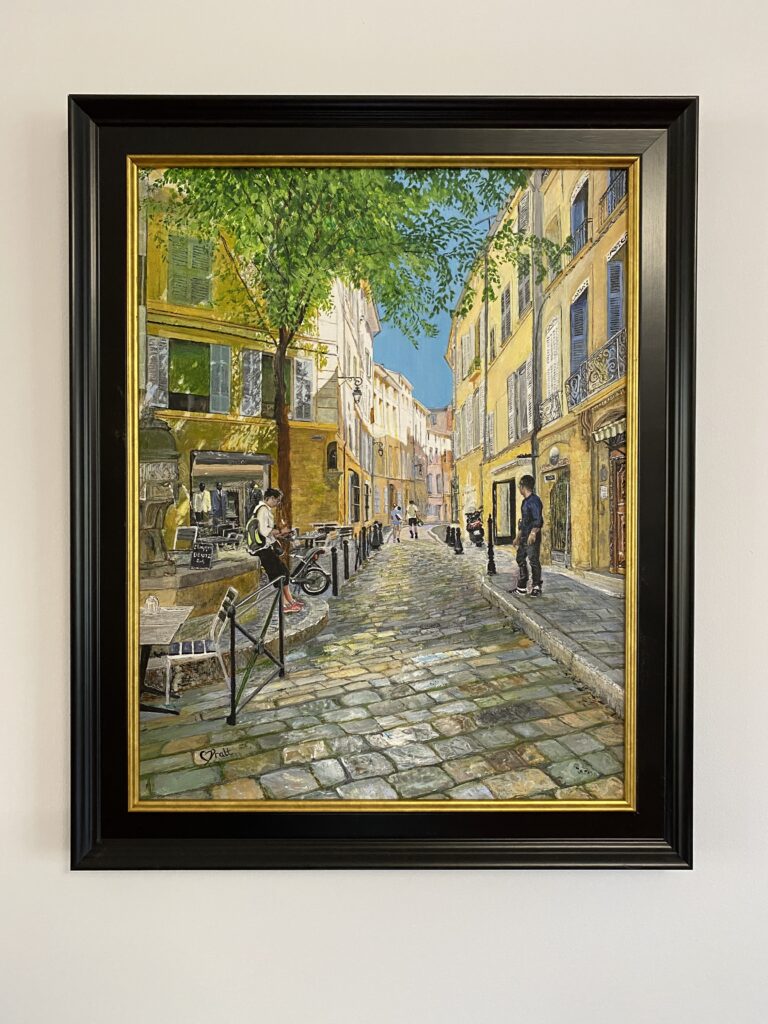Rue des Epinaux: Description
This snapshot of Rue des Epinaux, a quiet street in Aix-en-Provence , is a view from the Place des Trois Ormeaux. How clearly it shows the passing of time, as the cobbled roads and ancient fountain contrast with motorbikes and figures dressed in modern-day clothing. Yet there is a harmony to be found between the ancient and the modern: the stately and traditional old buildings provide welcome shade for the dwarfed figures to go about their daily lives, whilst the upper facades stand proudly in harsh sunlight.
Medium: Acrylic Paint on Winsor & Newton Artists’ Canvas Board (medium grain cotton)
Dimensions: H 534 mm x W 433 mm inc. frame
SOLD

Open to see framed work

Footnotes:
- The Rue des Epinaux owes its name to Bernard Pinelli, who was second consul to Aix-en-Provence. Bernard belonged to the illustrious Pinelli family that originated in Genoa and provided several doges and Roman Catholic cardinals.
- The Place des Trois Ormeaux features in the left foreground of my painting. Not surprisingly, it takes its name from three elm trees which once grew here; each occupied a corner of the triangular space. You may be interested to learn that the site holds a dark story:
In 1524 the Connétable de Bourbon led the conquering army of the Holy Roman Emperor, Charles V, into the city. He insisted that the townsfolk cry: “Vive Bourbon!” in his honour, but one citizen, remaining loyal to Francis 1st, King of France, disobeyed the command. Defiantly, he shouted: “Vive la France!” So the triumphant soldiers led him off and summarily hanged him from one of the trees. Legend has it that the tree died shortly afterwards. The tree was replaced on several occasions, but each time, the new one mysteriously withered. Today, the square has three maple trees – one which appears in the painting. I am glad to report that when I visited the square in June 2022, all three seemed to be in good health! - The heavy ornate door in the right foreground of my picture belongs to the Hôtel de Saphallin, a private mansion, and dates to 1672.
